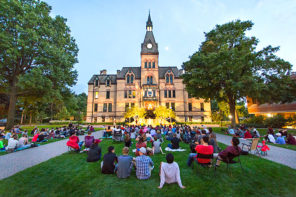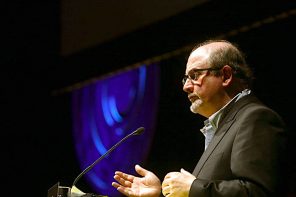Last week, French Prime Minister Manuel Valls defended his nation’s founding principles against what he felt was an “intolerable picture” painted by an article in The New York Times. The Times piece featured a string of direct quotations from European Muslim women, whose experiences of discrimination may sound familiar to American readers who follow the conversation about race in America: the women feel “insulted,” “humiliated,” “scandalized.” They feel the need to “politely justify” themselves. One feels “like a criminal.” One Parisian even directly references the American civil rights movement, saying, “I don’t have the strength of Rosa Parks.”
When Valls asserts that the French State is “neutral,” it sounds a lot like the way white skin in America has been normalized, while black and brown skin is marked.
It may be useful—for Americans aiming to understand the problems in France and for French people seeking to gain perspective on their particular set of issues—to reflect on these recent debates in France in light of the ever-evolving Black Lives Matter movement. In France, these debates surround a series of bans enacted (and subsequently struck down) on the burkini, the full-coverage women’s bathing garment that most closely resembles a skirted scuba diving suit. As BLM helps white America “get woke,” what might it take to wake up a French worldview that ties secular “neutrality” to the most basic Enlightenment principles of human rights? What is the appropriate vocabulary for talking about non-Muslim French privilege, the way so many are now able to discuss white privilege in America?
When Valls asserts that the French State is “neutral,” it sounds a lot like the way white skin in America has been normalized, while black and brown skin is marked. A woman’s bare head in France is no more neutral than white skin in the U.S. Bare-headedness has a history, one that triumphs in France at the expense of covered heads—whether we’re talking about the nun’s habit, or the Jew’s yarmulke, or the Muslim’s hijab.
The founding republican principles Valls lauds—liberté, égalité, fraternité—are as much a product of intellectual enlightenment as they are of colonialism and the civilizing mission. Parallels may be drawn to the ways white America and its particular notions of freedom were constructed on the enslavement of black bodies and the bloody erasure of natives.
What hair is for black women in America, the headscarf or hijab is for Muslim Frenchwomen. Joan Wallach Scott explains in The Politics of the Veil that the Muslim headscarf is a site where questions about divergent cultural standards—particularly those standards pertaining to sex—could play out. According to Scott, “French norms of sexual conduct [are] taken to be both natural and universal.” In contrast, she argues, “Muslim sexuality [is represented as] unnatural and oppressive when compared to an imagined French way of doing sex.”
Similarly, the beauty and sex appeal of black women in America is seen by many in terms of how she chooses to wear her hair. There is a slippery slope between what is “neutral” and what is natural on a woman’s body. In the case of black hair especially, “natural” takes on a double meaning. What American society deems “naturally” beautiful tends to butt up against how black hair naturally grows. In both cases, Muslim Frenchwomen and American black women are forced into a bind starting with the tops of their heads. This recalls how the BLM movement, founded by women, has brought the academic concept of “intersectionality” to the fore: the notion that when multiple identities coexist in a single body, the way each of those identities (for example, Muslim and woman) may be understood becomes complicated.
Does Valls really believe that the women interviwed in the Times article—Saadia, Khadija, Assia—can inhabit a neutral space among all the Maries, Camilles and Chloés, even with bare heads?
When Valls insists that, in France, religion must be relegated to the “private sphere,” he neglects the character of Islam (not to mention, Judaism and many other religion) as a communal, publicly signaled and practiced religion. Not only are some religious and cultural communities public-facing in their very nature, certain communities are visibly marked in spite of themselves. Does Valls really believe that the women interviewed in the Times article—Saadia, Khadija, Assia—could inhabit a neutral space among all the Maries, Camilles and Chloés, even with bare heads?
Valls’ position starts to look like the vaunted assertion of “colorblindness,” so common in white America as to be satirized by the great Stephen Colbert. Black Lives Matter and the conversations that have emerged from it have revealed colorblindness to be a myth. Just as, in this country, Blackness—and whiteness too—is imbued with meaning(s) and a past, in France, Islam has both religious and cultural implications. And so has laïcité—the French model of secularism. This is so much the case that many French people have taken to adopting what was once a political concept and turned it into its own identity. One can say, “Je suis laïque” (“I am secular”), the way one might say, “I am Jewish/Muslim/Catholic/Arab.”
In 2016, America has #BlackLivesMatter, and France has #JeSuisParis.
On one level, both proclamations encourage empathy with the innocent victims of senseless violence.While black Americans can fully claim BLM, not all French citizens can proclaim #JeSuisParis and be believed. This is because, as one of the women interviewed in the Times made explicit, “My heart is 100 percent French, but it feels like I have to prove my ‘Frenchness.’”
As a white, Jewish woman in liberal San Francisco, there is a chasm between my experiences of privilege and the discrimination felt by Muslim Frenchwomen and black Americans. This is why The New York Times was right to share the actual words of Muslim women. But Valls, so enchanted by “republican principles,” is unable to hear their words and believe them.




